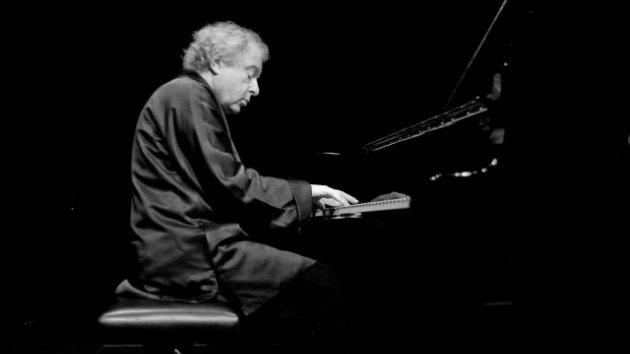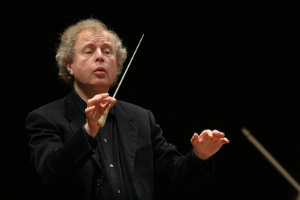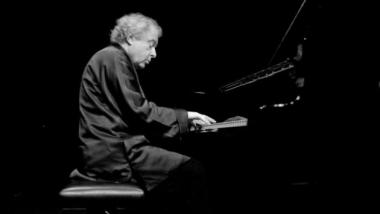
When András Schiff plays a recital and leads three concerts in Davies Hall next week, he will bring to conclusion an extensive, ambitious, multi-city, multi-year program, which he tells SFCV:
... the end of my project of "The Last Sonatas" consists of three programs based on the final three piano sonatas of Haydn, Mozart, Beethoven, and Schubert, the four pillars of Viennese classicism. The first two of these programs were played in San Francisco during the last season and the concluding one is presented now.
The recital consists of Haydn's Piano Sonata No. 62, Beethoven's Piano Sonata No. 32, Mozart's Piano Sonata in D major, and Schubert's Piano Sonata in B-flat major.
In the concerts conducted by Schiff, he also will be the soloist in Mozart's Piano Concerto No. 27; he will lead Haydn's Lord Nelson Mass, with Ragnar Bohlin's S.F. Symphony Chorus, and soloists Anna Lucia Richter (soprano), Britta Schwarz (contralto), Werner Gura (tenor), and Robert Holl (bass). Additionally, they will perform Schubert lieder.
Schiff says "To hear the creations of these four masters next to each other, to observe the similarities and the differences, is most fascinating," adding about the composers:
This extraordinary range of music was written in a period of roughly 40 years, between 1788 and 1828, mostly — with the exception of the Haydn pieces that were composed in London — in the city of Vienna. Haydn and Beethoven were relatively old, while Mozart and Schubert died at a young age.
However, it's not the number of years that are interesting. Mozart and Schubert had reached incredible maturity within a short span of life. Of the four composers, Mozart and Beethoven were virtuoso pianists, Haydn and Schubert were not. Beethoven studied with Haydn, and this is obvious in his motivic technique and in his treatment of the variation form. Schubert worshiped Beethoven but his nature and melodic talent are much closer to Mozart's.
Beethoven and Schubert had both worked on their final sonatas simultaneously, they have been conceived as triptychs. The three Beethoven sonatas form a wonderful program on their own. In my opinion, the three last Schubert sonatas do not work as a program, they are enormous and they tend to weaken each other. Therefore I decided to make these program Haydn and Mozart on one side, Beethoven and Schubert on the other, light and shade, Apollonian and Dionysian.

Schiff has been receiving extravagant praise everywhere, but improbably in addition to these series and many other recent performances, Schiff — who plays everything without a score — a month ago also performed Bach's monumental Goldberg Variations at the BBC Proms, where, reports The Guardian, he "was alone at the piano in the centre of the Albert Hall stage, and a capacity audience [of 5,200] remained silent and spellbound throughout the 70-minute piece."
Before that concert, Schiff — a man with well-developed sense of humor — made fun of the question about "using a modern piano, which is the wrong instrument for Bach, in this enormous hall" by answering:
You are absolutely right. Bach states it clearly on the title page of the first edition (alas the manuscript has not survived): Aria with 30 variations for a harpsichord with two keyboards. Purists should only listen to it on that instrument. And not at the Albert Hall.
According to Johann Nikolas Forkel’s biography (1802), Bach had written this work for Count Keyserling, formerly Russian ambassador to Saxony. The count was suffering from insomnia and on sleepless nights would summon his court harpsichordist, Johann Gottlieb Goldberg, a pupil of J.S. Bach, to “play me one of my variations” to soothe his agony.
Historically speaking, then, the ideal venue for this piece is a drawing room, with one player and one listener.

